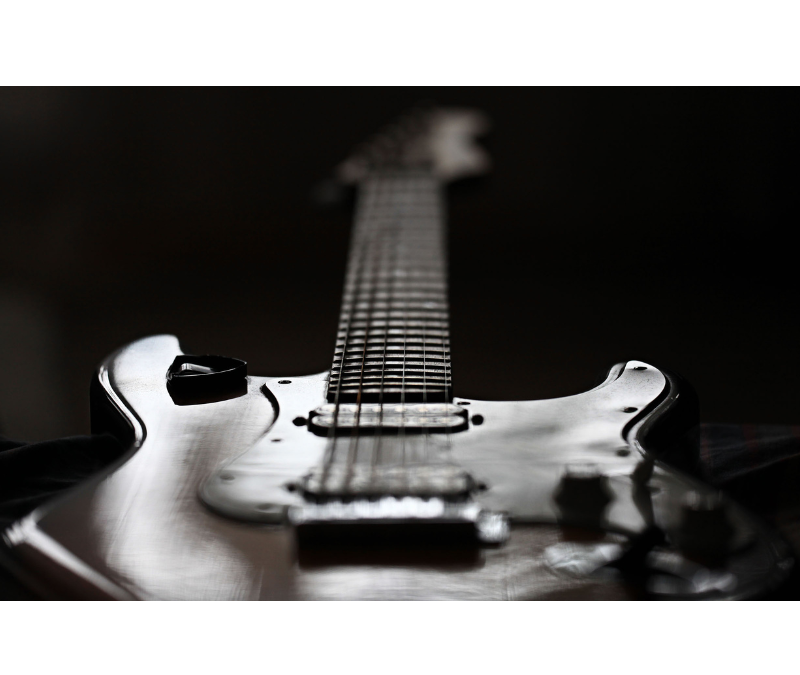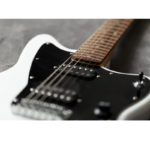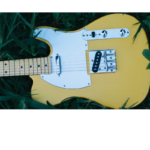The A major chord is one of the most fundamental chords every guitarist must learn. It’s not only prevalent in numerous songs across genres, but it also serves as a building block for understanding chord theory and inversions. In this article, we’ll explore the A major chord in detail, learning to play it in different inversions and triads on the guitar. By the end, you’ll have a comprehensive understanding of the guitar A chord and its versatility.
Understanding the A Major Chord
The A major chord consists of three notes: A, C#, and E. These notes are known as a triad, which is the simplest form of a chord. When played together, these notes produce the bright and uplifting sound characteristic of a major chord.
Standard A Major Chord
Before diving into inversions and triads, let’s start with the standard A major chord in open position. Here’s the basic fingering for the A major chord:
e|---0---
B|---2---
G|---2---
D|---2---
A|---0---
E|---x---
In this voicing:
- The A string (5th string) is played open.
- The D, G, and B strings are all fretted at the 2nd fret.
- The high E string is played open.
- The low E string is muted.
This is often one of the first chords beginners learn because of its relatively simple finger positioning. If you are wanting to understand guitar chords and how to play them across the fretboard, download our Chord Secrets guitar course

Download The FretDeck & Chord Secrets Course!
Download Course
Playing the A Major Chord in Different Inversions
An inversion involves rearranging the notes of a chord so that a different note is the lowest (bass) note. For the A major chord, this means we can rearrange the order of A, C#, and E. There are three inversions of the A major chord:
- Root Position (A as the bass note)
- First Inversion (C# as the bass note)
- Second Inversion (E as the bass note)
Root Position
The root position of the A major chord is the standard form we’ve already covered, with A as the bass note. Another way to play it higher up the neck is:
e|---5---
B|---5---
G|---6---
D|---7---
A|---x---
E|---x---
This voicing uses a “barre chord” shape, which is crucial for moving up and down the neck.
First Inversion (C# in the bass)
In the first inversion, C# becomes the lowest note:
e|---4---
B|---5---
G|---6---
D|---6---
A|---4---
E|---x---
This voicing requires barring the 4th fret and can be challenging for beginners, but it adds a different tonal quality to the chord.
Second Inversion (E in the bass)
For the second inversion, E is the lowest note:
e|---0---
B|---0---
G|---1---
D|---2---
A|---2---
E|---0---
In this open position voicing, we have an E major shape moved up to produce an A chord. This version is rich and full due to the open strings.
A Major Chord Triads on the Guitar
Triads are a fundamental aspect of music theory and can add depth to your guitar playing. A triad consists of three notes, and for A major, these are A, C#, and E. Triads can be played on different sets of strings, providing a range of tonal colors.
A Major Triads on the Top Three Strings
- Root Position (A, C#, E)
e|---5---
B|---5---
G|---6---
D|-------
A|-------
E|-------
- First Inversion (C#, E, A)
e|---9---
B|---10---
G|---9---
D|--------
A|--------
E|--------
- Second Inversion (E, A, C#)
e|---12---
B|---14---
G|---14---
D|--------
A|--------
E|--------
A Major Triads on the Middle Three Strings
- Root Position (A, C#, E)
e|--------
B|---2---
G|---2---
D|---2---
A|--------
E|--------
- First Inversion (C#, E, A)
e|--------
B|---5---
G|---6---
D|---7---
A|--------
E|--------
- Second Inversion (E, A, C#)
e|--------
B|---10---
G|---9---
D|---11---
A|--------
E|--------
Practical Applications of A Major Chord Inversions and Triads
Knowing various inversions and triads allows you to add variety to your playing. Here are some practical ways to incorporate these into your music:
Enhancing Chord Progressions
Switching between different inversions of the A major chord can add movement and interest to your chord progressions. For example:
D - A (root) - E - A (first inversion)
Creating Melody Within Chords
Incorporating triads into your playing can help you create melodic lines within chord progressions. For instance:
e|---9---7---5---5---
B|---10--9---5---5---
G|---9---7---6---6---
D|------------------
A|------------------
E|------------------
This sequence moves through different triad shapes to create a melodic progression.
Fingerstyle and Arpeggios
Using triads and inversions can also enhance fingerstyle playing and arpeggios. Here’s a simple arpeggio pattern using A major triads:
e|-----------------9---12---
B|------------10-----------
G|------6---9--------------
D|---7---------------------
A|-------------------------
E|-------------------------
Tips for Practicing A Major Chord Inversions and Triads
- Use a Metronome: Practice changing between different inversions and triads with a metronome to develop timing and fluidity.
- Visualize Shapes: Memorize the shapes and positions of each inversion and triad on the fretboard.
- Apply in Songs: Try incorporating these chord shapes into songs you already know.
- Experiment with Voicings: Explore how different voicings sound in various musical contexts.
Conclusion
Mastering the A major chord, its inversions, and triads can significantly enhance your guitar playing. By understanding these concepts, you can add richness and variety to your music, create interesting chord progressions, and improve your overall guitar technique. Remember to practice regularly, be patient, and enjoy the process of discovering new sounds on your guitar.
With these tools at your disposal, the guitar A chord is no longer just a basic shape but a versatile element that you can use creatively in your music.

Download The FretDeck & Chord Secrets Course!
Download Course










